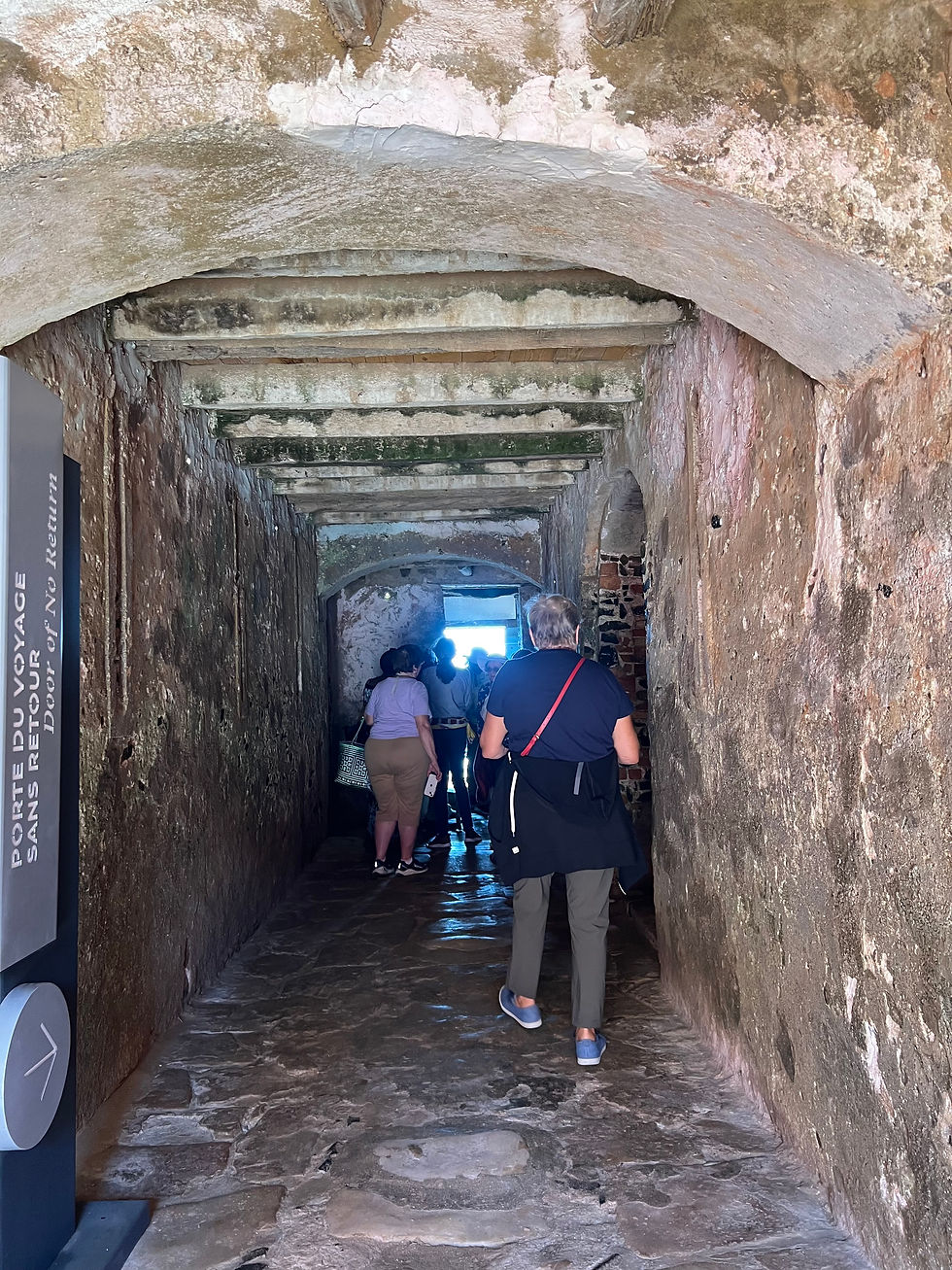Day 63, Port: Dakar, Senegal, Africa
- nansknits19
- Mar 24, 2023
- 3 min read
Beautiful Goree Island

Our first port in Africa was Dakar, the capital and largest city of Senegal. However, I chose to spend my first day in Africa on "Unforgettable Goree Island" as described by our Destinations Department. The area having been colonized by the Portuguese in the early 15th century, was used as a base or more descriptively, a warehouse, for the slave trade. Good choice for the slave traders as the island is much like Alcatraz, once there, there is no escape. Our time spent actually on the island is true to its description, unforgettable. Our experience to and from is equally memorable but for a totally different reason. Our trip was to be four hours in duration, leaving the ship at 10:30 am. Problem #1, the Port Authority would not allow the ferry which was to transport us to the island to dock alongside our ship as planned and previously approved. Problem #2, the tour company had no buses to transport us from the ship to the port terminal where the ferry was free to dock. Eventually, with great effort and delay we arrived on the very beautiful island via the public ferry packed like a sardine can. Finally we arrive!


The lone hotel on the island.

Townhomes on the island. Reminds me of New Orleans French Quarter.

Another street in the residential section adorned with beautiful flowers.

The National Tree of Senegal. Whether it has that actual designation or not, I do not know, however, our guide spoke of it with reverence. It almost looks dead but with closer inspection, one sees small greenish-grey pods. These pods contain magnesium. Very helpful for one who has digestive problems. Also according to local belief, upon the death of wise old men, they are buried within this tree thereby retaining all their knowledge. If you look closely at the trunk, you can see small bumps sticking out. One would surmise that the very wise old man was first cremated. Also, it is their belief that failure to bury these wise old men in this tree trunk causes drought. I wanted to ask where the wise old women were buried, but feared I might be shown, literally.

Just one of the many, many markets of locally made items. All the shop owners spoke impeccable English.

Saint Charles Borromeo's church built in the 17th century remains in use today though 95% of the island's inhabitants are Muslim.

Ocean view adjacent to the House of Slaves.


The House of Slaves Museum. Before we were allowed to enter a long, heated debate took place between the guide pictured above and the man who held the keys to the Museum. Some have cast doubt upon the authenticity of this structure as ever having served as a prison, I believe it did. A most chilling experience.

One of the larger cells where as many as 30 women were housed. The captives were separated by gender and age. Chained and sparsely fed.

Hallway to the "Door of No Return". We were told much about the treatment of the captives, their humiliation, degradation and loss, but not a word as to how or why they came to be captives.

Once having passed through this door, all identity, freedom and family was forever lost.

This very small holding cell was used for those who declined to walk through that door. Food, sparse in any case, was withheld entirely until one either expired or changed their mind about the door.

View from atop the prison.

Rooftop view of Dakar harbor in the background.

Children playing at the beach while we awaited our ferry.
Our return was as much a disorganized mess as the trip to the island. Finally some six and a half hours after our departure, we managed to return to our ship and continue our voyage.
Today Is Someday! Be Thankful & Enjoy It!



Comments